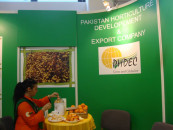Conflicting forestry, wildlife management paradigms
Policies are conservative that do not consider sustainability aspects of forests, ecosystem

Sustainable forest management is a simple practice that meets the needs of the current generation without compromising those of the future generation.
Sustainability has three important development paradigms, ie, social development, economic development and environmental protection. All three pillars must be inclusive and have to play their role simultaneously without compromising the impacts of others.
Social development means that we must ensure that sustainable forest management takes care of the social and cultural norms of a community or society at large. Economic development means to ensure economic progress of the communities and society at large while environmental protection ensures protection of the environment during the developmental process.
Read Tech-driven conservation of wildlife on the cards
The rural population of Pakistan, mainly the mountain-dwelling communities, primarily depends on forestry and other natural resources as a source of food, feed, shelter and income generation as they don’t have any alternative sources of livelihood.
It is observed that the so-called champions of environmental protection always tend to raise the slogan of not touching the forestry resources even beyond the economical rotation age, although leaving trees beyond the rotation age releases the stored carbon stock into the atmosphere.
Therefore, to control the carbon stock emissions from the decaying wood, it should be harvested at the economical rotation age without waiting for its biological rotation age.
Pakistan is a party to the United Nations Framework Convention on Climate Change (UNFCCC) and has ratified the Paris Climate Agreement. Thus, it is obliged to control the greenhouse gas (GHG) emissions.
Under the Nationally Determined Contribution (NDC) that Pakistan submitted to the UNFCCC Secretariat, it is required to achieve the targets set in it and other such commitments.
All these agreements are in line with the sustainable development paradigm, which must be according to the Sustainable Development Goals (SDGs) adopted by Pakistan.
All these instruments ensure the use of available resources to meet the needs of the current generation without compromising the requirements of future ones. This means we must feed the present generation using the available natural and forestry resources but on a sustainable basis.
Declaring a piece of forest as national park does not mean that the same piece of land cannot be de-notified to ensure the sustainability of resources in order to provide social, economic and environmental services. This way, the natural resources keep on renewing themselves and satisfying the needs of owners and other forest dwellers.
Most of the forests have recently been restored with green vegetation under the billion and 10 billion tree plantation programmes. In addition, they are covered by REDD+ for developing carbon credit projects.
REDD+ studies focus more on the local land owners, communities and rights holders for social and economic benefits. For instance, the REDD+ study for Kaghan Valley in the Hazara Division covers over 60% of private land ownership of the mountain dwelling communities.
Their rights carry a lot of weight and such rights must be encouraged and facilitated aimed at providing goods and services to the local communities.
It is ironic to see conflict of interest in divergent uses and the management of forestry resources in the hilly mountains of K-P. A piece of forest land with local community rights has been declared as a reserve and protected forest, which is further aggravated by giving it the title of national park.
On the other hand, Pakistan has included such pieces of extended forests as REDD+ sites that require social and economic exploitation. All such declarations must be revisited in light of the ground realities and their uses for REDD+ benefitting the local communities more than other stakeholders.
The Kaghan Valley, for instance, has conflicting uses because of the forests being declared as national parks and protected areas whereas other parts come under the active forest management plans. The trophy hunting in G-B and Chitral is, in fact, community-based management of wildlife and the community’s share in each hunt is 80%, leaving 20% of the trophy fee as administrative fee for the G-B forestry and wildlife department.
The secret of success of these interventions lie in the community’s share, which is playing an important role in sustainable management of wildlife resources in G-B and Chitral, just because of the benefits to the local communities.
K-P and other provincial forestry and wildlife departments have failed to introduce innovation in managing resources under the market mechanism and by involving communities. Keeping forests and other ecosystem as conservation reserves by banning the entry and rights of the local community is an orthodox and centuries-old practice without any innovation.
Wildlife policies are totally conservative without considering the sustainability aspects of forests and the ecosystem. They only support the third pillar of sustainability, ie, environmental conservation or protection, and totally ignore the social and economic aspects of sustainability.
This is against the principles of sustainable development that is in vogue throughout the world.
The writer holds Masters and PhD in Forest Management and has served in provincial forestry, national and international environmental organisations
Published in The Express Tribune, September 25th, 2023.
Like Business on Facebook, follow @TribuneBiz on Twitter to stay informed and join in the conversation.



















COMMENTS
Comments are moderated and generally will be posted if they are on-topic and not abusive.
For more information, please see our Comments FAQ